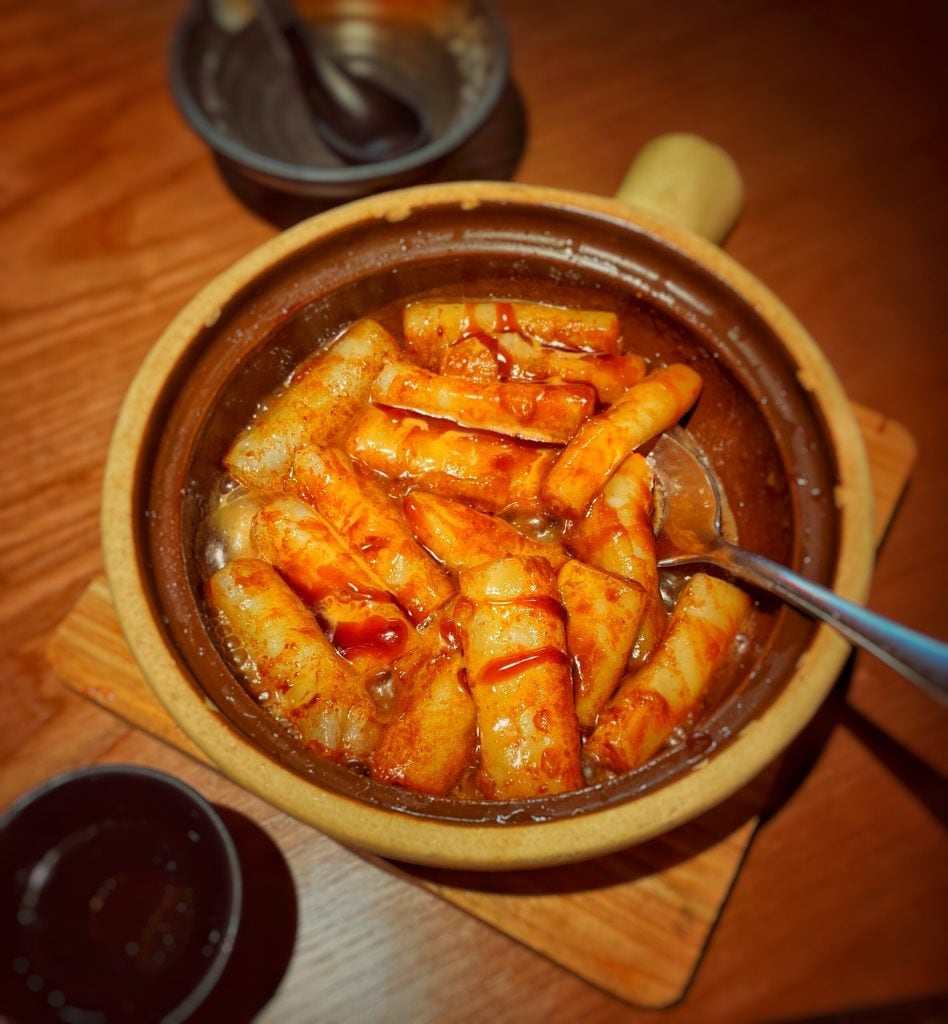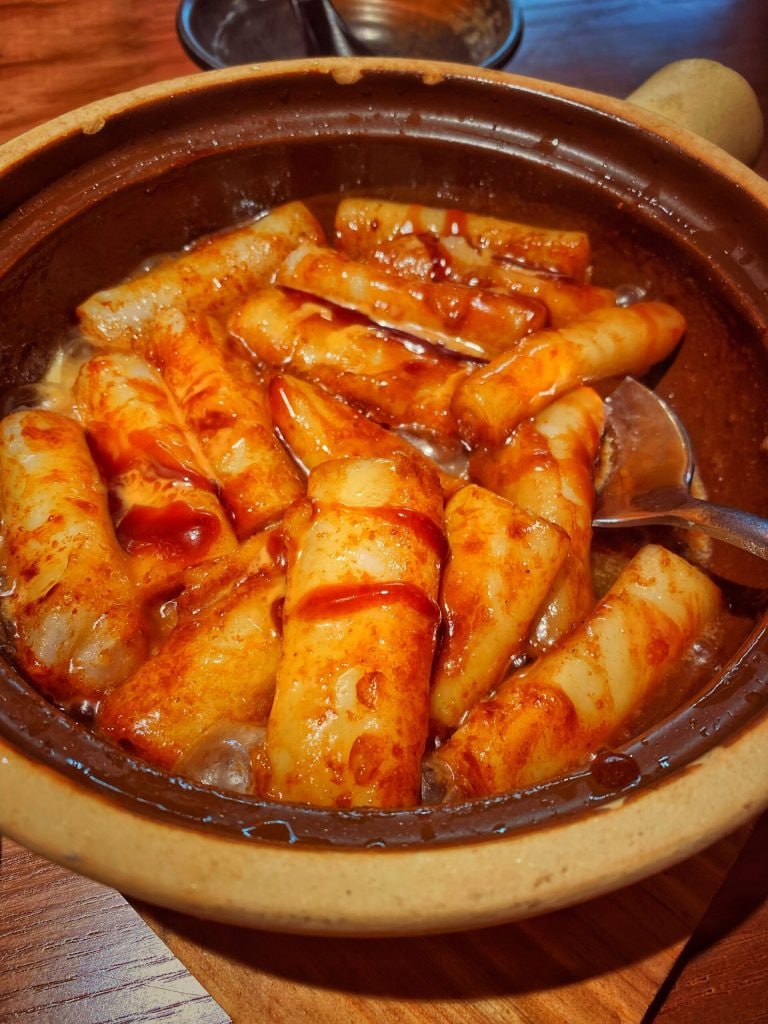The gireum-tteokbokki are Korean rice cakes belonging to the Gochujang tteokbokki category, that is garae–tteok seasoned with spicy sauce made from gochujang (chili paste).
The garae-tteok is a long cylindrical tteok (rice cake*) made with non-glutinous rice flour.
The spicy variant of tteok-bokki made with gochujang-based sauce is believed to have first appeared in 1953.
When Ma Bok-Lim participated in the opening of a Korean-Chinese restaurant, he accidentally dropped the tteok into a jajangmyeon: a Korean-Chinese dish consisting of Korean noodles served with a thick sweet bean paste sauce, diced pork, and vegetables.
Realizing it tasted good, he developed the idea of seasoning the tteok with Korean chili sauce, gochujang.
There are two versions of gochujang tteokbokki: the gungmul-tteokbokki, soupy, whose recipe is already on the blog, and the gireum-tteokbokki which are instead dry.
Often in gireum-tteokbokki, a mix of gochugaru, soy sauce, sugar or syrup, and sesame oil replaces gochujang.
The soft garae-tteok sticks are seasoned with the sauce mixture, pan-fried with oil, and served with sliced green onions.
Gochujang tteokbokki are consumed throughout the East, not only in Korea, as we tried them during our trip to Shanghai, China (the ones in the photo) with a seasoning translated as “ecstasy powder” (see photo below), namely a ground mix composed of Sichuan pepper combined with chili peppers of the medicinal variety, united with sesame.
With a bright red color and spicy aroma, it closely resembles the Korean seasoning based on gochujang.
The recipe is indeed included in the section “Chinese version of the blog” however, the following is the original, Korean one, of which you can also find the “broth” variant on the blog:

- Difficulty: Medium
- Cost: Economical
- Rest time: 20 Minutes
- Preparation time: 15 Minutes
- Portions: 2 people
- Cooking methods: Stovetop
- Cuisine: Korean
- Seasonality: All seasons
Ingredients
- 12.3 oz garae-tteok
- 1.5 tbsp gochugaru
- 1 tbsp gochujang
- 1.5 tbsp brown sugar
- 1.5 tbsp soy sauce
- 1.5 tbsp sesame oil (+ for pan-frying)
- 2 cloves garlic
- 2 green onions
Steps
If you buy ready-made garae-tteok, you will need to soak them in a bowl to slightly soften them and facilitate separation if they stick together, otherwise, you can try making them following this recipe.
Drain the rice cakes.
Mix soy sauce, sesame oil, crushed garlic, gochujang, and gochugaru. Season the rice cakes.
Heat oil in a pan over medium-low heat, then pour in the rice cakes and stir.
Let it gently sizzle for about 10 minutes.
Once they have softened, they will bend under the pressure of a utensil.
Serve with sliced green onions (the green part).

FAQ (Frequently Asked Questions)
*What is a Tteok?
The Tteok (Korean: 떡) is a group of Korean rice cakes made with steamed flour from various grains, including glutinous and non-glutinous rice.
The steamed flour can also be pounded, shaped, or pan-fried to prepare the tteok.
It is not just a dessert. It can range from elaborate versions made in various colors, fragrances, and shapes using: nuts, fruits, flowers, and namul (wild herbs/vegetables), to simple white rice tteok used in home cooking.
It is largely divided into four categories:
“steamed tteok” (찌는 떡), “pounded tteok” (치는 떡), “boiled tteok” (삶는 떡) and “pan-fried tteok” (지지는 떡).
The steamed one is made by steaming rice or glutinous rice flour in the “siru” (시루), a large earthenware steamer, hence it is often called “sirutteok” (시루떡). It is considered the basic and oldest form of tteok.
Pounded tteok is prepared by using a board or a mortar after first steaming it.
In the preparation of pan-fried tteok, the rice dough is flattened like a pancake and pan-fried in pan with vegetable oil, for example, the Japchae.
There are also shaped tteok, which are obtained by kneading the dough with hot water, then shaping it into balls.

